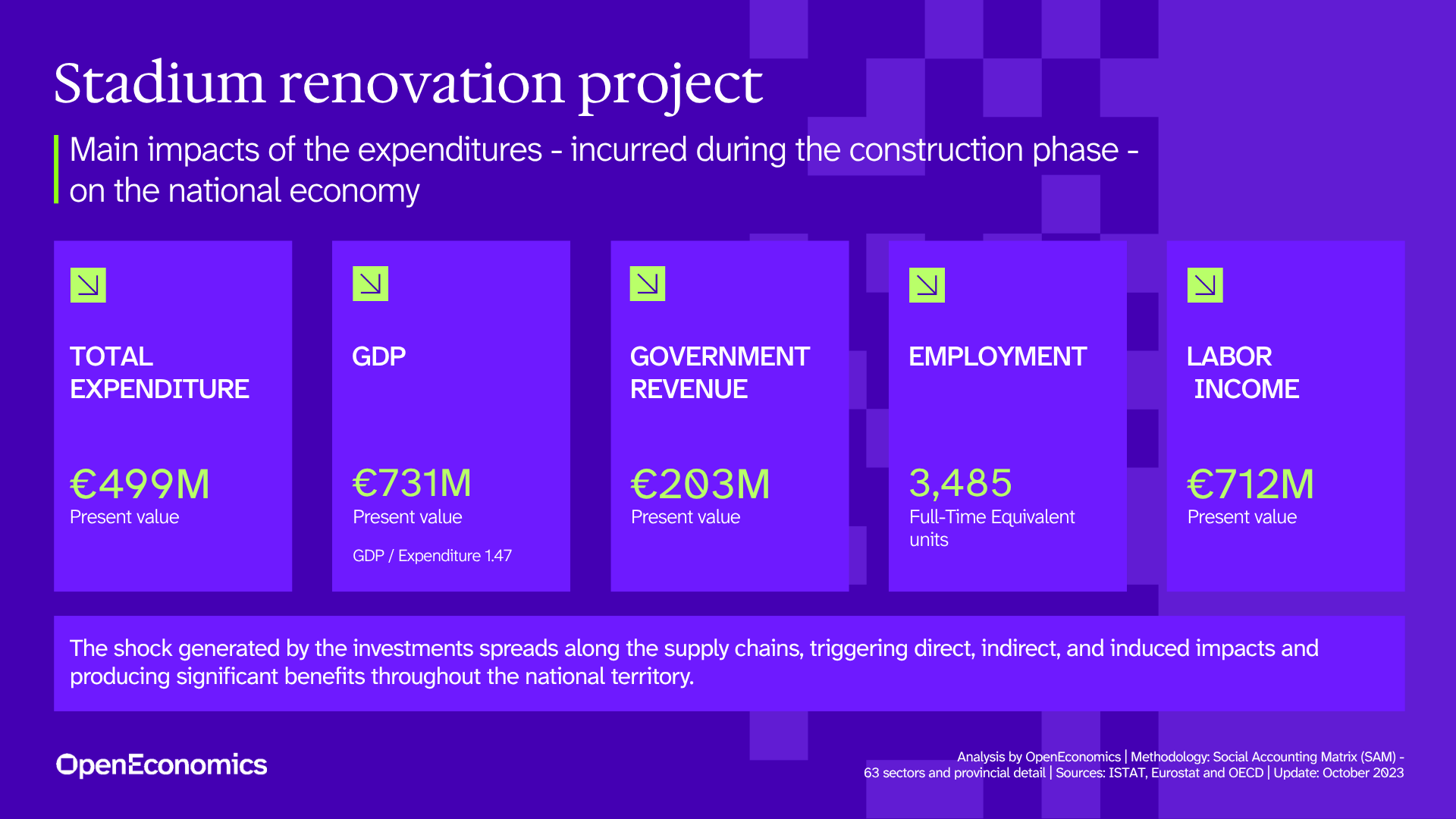OpenEconomics assessed the redevelopment projects for “Ennio Tardini” (Parma), “Carlo Castellani Computer Gross Arena” (Empoli), “Renato Dall’Ara” (Bologna), and the new “Sant’Elia” stadium (Cagliari). The study quantified the impact of capital expenditure for these four stadiums on GDP, employment, household and corporate incomes, and tax revenue at both provincial and national levels—offering transparent and replicable KPIs (Key Performance Indicators) for benchmarking.
OBJECTIVES
Assessing the economic impact of sports infrastructure investment
To evaluate the economic effects of stadium redevelopments, distinguishing between direct, indirect, and induced impacts on GDP, employment, household and business incomes, and tax revenues. The aim is to equip stakeholders with reliable, provincially and sectorally comparable KPIs, enabling transparent communication of robust, evidence-based results.
SOLUTION
Multi-Sector SAM with provincial resolution: tracing demand-side economic impact
OpenEconomics employed a Social Accounting Matrix (SAM) model covering 63 sectors with provincial granularity, integrating data from ISTAT, Eurostat, and the OECD. Expenditure associated with the stadiums was treated as an exogenous demand shock, with the model quantifying resulting local and national contributions to GDP, employment, household and firm incomes, and tax receipts. This approach traces the propagation of investment through direct supply chain links and subsequent indirect and induced effects, yielding results that are fully comparable across territories.

RESULTS
Stadium investments: broad economic benefits nationwide
Investment in stadium facilities stimulates regional and national production systems, delivering measurable and comparable impacts across key value chains. An outlay of €499 million resulted in €731 million added to GDP, 3,485 full-time equivalent new jobs, €712 million in household and business income, and a forecast of €203 million in additional tax revenue. The GDP-to-expenditure multiplier was 1.47.
ADDED VALUE
Rigorous methods, sector standards, robust and comparable evidence
Methodological rigor: National, 63-sector SAM, provincial detail, and official statistics underpin solid, replicable estimates
Transparent KPIs: clear evidence on GDP, job creation, income, and public revenues for cross-sector and regional comparison
International alignment: methodology is consistent with international best practices, aiding well-informed, evidence-based policy and investment decisions.













